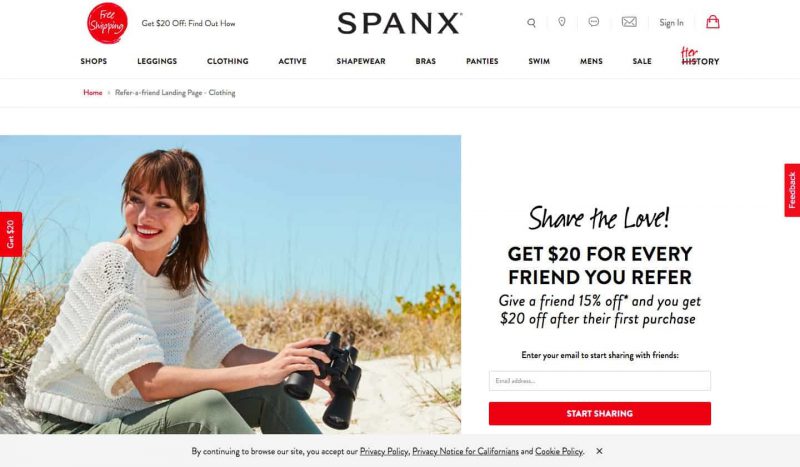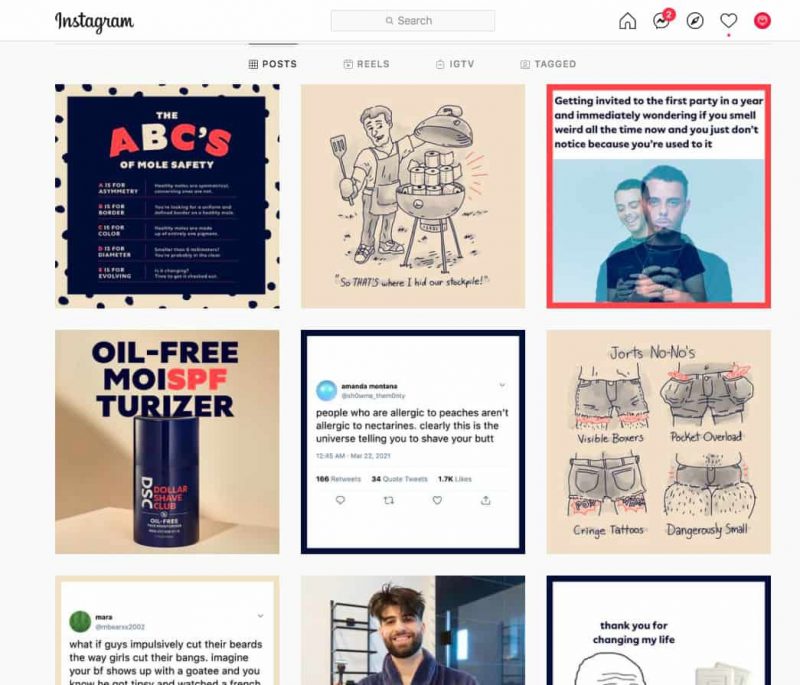
Let’s ask the same question. If one day your business loses its logo, what is left for users to recognize your brand?
There is one thing that is effective but not yet noticed by everyone, that is Brand Voice – the voice of your brand!
Surely a lot of information has convinced you that owning a logo is an indispensable key in the branding process for a business. You need to build a visual identity around that logo to be consistent in the customer’s eyes. However, on the journey to develop brand identity, most business owners miss one important aspect: Brand voice.
What is Brand Voice and why is it so important?
Like a person’s voice, the “brand voice” is basically how you make your story resonate in your audience’s head. It should reflect the brand personality you have created for your business. That voice will be the harmonious melody in all communication activities of the business, whether it is on social networks or through customer service.
To better understand brand voice, the simplest way is to see how well-known brands have exploited it. Let’s take the “product details” section of a shirt dress with belt from online fashion retailer ASOS below as an example:


On the very first line of the Product Details section, ASOS wrote “worth making plans for” instead of a regular line like “cottonmade from 20% cotton” (made from 20% cotton). which most shoppers tend to overlook? This presentation of information clearly shows the intelligent, engaging and interesting voice of ASOS.
As another example, here’s how popular food delivery app Baemin predicted the weather:

Instead of saying “The weather in the North becomes cold, the temperature ranges from 8-12 degrees Celsius”, Baemin chose a more unique expression when borrowing the lament of a special group of people: “The FAs in the region North 3 parts helpless, 7 parts cold, all at the same time complaining about the cold weather for the past few days. It is easy to see that this way of saying shows the personality traits that Baemin has been building – youthful, dynamic, witty and lovely.
Above are two very clear examples showing how a business uses their Brand Voice to capture customer attention and connect emotionally through small but subtle touch points.
In fact, studies have shown that presenting a brand consistently can increase sales by 33%. So, besides entertainment, using a consistent brand voice can help you retain customers and boost your sales! Because, the more consistent a brand is, the more likely customers will remember that brand. Consistency shows the professionalism of your brand, which helps customers feel they can be trusted and allows you to deliver specific experiences in a more positive way.
Not only that, but did you know that 61% of consumers would consider buying from brands they see as having a unique way of presenting content? So what you need to do is to exploit your brand voice well. Businesses often can’t control everything they say online, but you can completely control how you say it. For example, if you are a real estate agent, you usually focus mostly on discussions around real estate related topics, but there will be times when you discuss unrelated issues. other authority. So the easiest way for readers to recognize you, is through the voice of your brand, or the way you talk about it.
Brand voice certainly plays a big role in what sets your brand apart from your competitors. And again, your brand voice helps you maintain the link between your content and your brand in the minds of your followers.
However, there is still one element worth noting when you are managing your brand voice, which is the brand tone (Brand Tone).
Distinguish Brand Voice (Brand Voice) and Brand Tone (Brand Tone)?
Like we mentioned above, the voice should reflect the overall personality of the brand you’ve built, it needs to be consistent and unchanging.
Your Brand Voice should meet certain requirements:
- Different and unique: when starting to build a brand voice, immediately stop thinking about imitating Baemin’s humorous speech, interesting information presentation like ASOS or imitating the brand voice of any brand. any. Each brand has its own personality and characteristics. You must create a voice that represents your brand.
- Easily identifiable: Simply put, can customers read a piece of content and recognize it as coming from your brand? Make sure the answer is yes.
- Support and complement: It should be able to interact with the rest of your brand identity. In other words, your voice is a perfect “piece” of the big picture of your brand “shape”.
- Consistency: Whether you’re posting an interesting article on your Facebook page or replying to a client’s email, your brand voice should come first and become the co-context connection. best for all the goals you provide.
Here, once your brand voice is consistent, your tone can change depending on what it is being used for. In other words, your brand voice is more general than what you communicate, while tone shows how you say it in detail and will be tied to attitudes and emotions in each case. specifically.
For example, the tone in which you respond to a comment on social media is likely to be more upbeat than the tone in which you respond to an angry customer complaining via email. Similarly, the tone of your post when posting a product announcement should be more exhilarating than a message about your opening hours.
In general, the brand tone will be improvised in different situations, but still based on the brand voice.
The above information has helped business owners understand why brand voice is so important. Next, let’s analyze and build your own brand voice!
7 steps to create your brand voice
Here are specific steps to help you find the best voice brand for your business.
Step 1: Reiterate the mission statement of the business
Before building any part of your brand identity, you need to have a deep understanding of and keep in mind the original mission statement your business has set. Creating a brand voice is no exception.
Let’s flip back a bit and answer the questions: Why did you start your company? What are the core values in all activities of the company?
Take the Alzheimer’s Association mission statement as an example:
We can see that, in the “Our mission” section, the Association makes it very clear that their mission is to “end Alzheimer’s and all other dementias – by ways to accelerate global research, promote risk reduction and early detection, and maximize quality care and support .” To carry out this mission, they commit to the most “Core Values” namely integrity, inclusivity, diversity, commitment towards excellence, etc.
To make it easier to understand, Malu will take another example of a leading brand in Vietnam:

Maybe we are all familiar with the leading national corporation – Vingroup. With a clear mission “For a better life for everyone” and 6 core values of “Trust – Mind – Tri – Toc – Tinh – Nhan”, Vingroup is on its way to becoming the leading corporation in the region. region, contributing to improving the quality of life of Vietnamese people. And we have never had to doubt that Mission Statement, partly because Vingroup has conveyed that spirit through their brand voice.
Through two examples, we can confirm that the brand voice will continuously emphasize and reinforce specific characteristics of the business in the minds of customers and ensure that you will always be proactive in controlling those. that feature. In other words, your voice – the way you speak to your audience – needs to be rooted in your mission statement and linked back to your core values.
If you are still struggling to find brand characteristics, you can refer to the following form:
When you have completed and are holding a unique idea for the brand voice, then we continue to see how to apply it effectively?
Step 2: Check all the content that you have produced
In the past, if you’ve created content for your brand – whether it’s a banner ad, a series of social media posts, or an entire blog – it’s time to test and evaluate them all. those things. (In case you just launched your business and don’t have any content yet, skip this step and follow the next steps.)
Don’t forget to review the content above:
- Website
- Landing page
- Advertisement
- Blog post
- Video
- Social media posts
- In-store signage
In those posts/content, do you notice topics or words appearing with high frequency? Or, are some articles feeling very serious while others are lighter? Take note of all the similarities and differences that you notice.
Here is a landing page of clothing brand Spanx, which is used to encourage customers to refer their friends for a discount:

Notice the first line in the main display, Spanx emphasizes “Share the love!” (Share the love!) with a playful and exhilarating energy. Customers will also feel this energy in their Instagram posts. For example, in the post below, Spanx created a very happy feeling when it said, “Do you know what the common point between the weekend and Spanx jeans? They are all loved by everyone!” (What do long weekends and Spanx denim have in common? Everyone loves them!):

Whether it’s a piece of content displayed on a landing page, or content displayed on instagram, we agree that Spanx has used the same lively, interesting and fun language when communicating with customers.
Next, after you’ve gone through your content, analyze their language and tone and performance. That is, you can judge a language or tone of voice that is performing “well” if it meets the goals you set for the content when it was posted – shares, clicks, likes. , comments, etc. Which of your posts have the best and worst engagement? From here, let’s summarize the commonalities between content that attracts attention and content that attracts readers.
Step 3: Research your competitors
Know you know me, a hundred battles a hundred wins. You have to know how your competitors are talking to their audience (or your audience)? What tone of voice do they use, do they build one or many different tones? Here’s a little tip for you. If you read through their blog content or social media posts and start to feel that you can define who your brand is after 10 minutes, chances are they are using some sort of brand voice. identify.
Once you’ve dug out their brand voice traits, assess whether they’re a good fit for your industry. Do you think a similar approach should be taken to communicating with your audience? Or does it align with your own brand mission? You even have to continue to analyze comments on social networking sites to know the exact “shape” of their voice.
Ideally, you should never create a brand voice that is identical to your competitors’, as this will easily confuse your audience with theirs. In the content above, we also outline the distinct requirements a voice needs to give your brand a unique advantage. However, it is important that you understand the objective factors – both the failure and success of your competitors – so that you can think of novel ways to reach your audience.
Step 4. Identify your audience and listen to them
Detailed target audience research is also an extremely important step to finding a suitable brand voice. Because even if the idea is unique and the person who needs to hear it is not interested, the idea will be worthless. Who is your target customer? What age group are they in? Are they married yet? Are they preoccupied with social issues or are they more concerned with financial matters? The clearer the customer portrait , the easier it is to find the right solution.
Or, if you’re already in business and have a loyal following, this would be a good time to know what they think of you. Like you did during your research, it’s important to assess the parts of your brand that they connect with and the personality traits of your brand they might envision during their brand time. Yours doesn’t have any specific identification.
The best way to know all of that? Ask them!
You can easily create a poll on social media, send a poll to a customer email or check the comments on your blog. Try asking things like:
– Describe our brand in three words.
– If our brand were one person, who would it be?
– Do you think our way of communication is appropriate for the product/service we are providing?
You will certainly get a lot of feedback if you turn this into a contest or discount your product for the first 50 people to take the survey.
When you get a response, compare how much they overlap with what they say about your brand with what you’ve said about yourself. If both are on the same page, then you know your brand voice is on the right track!
Note that the ideal brand voice your audience wants to hear may not be the voice you expect them to hear.
A game company has created a product full of sassy and silly, Cards Against Humanity . They pride themselves on being a leader in being offensive. However, rather than alienating customers, their sarcastic tone is exactly what draws people to their brand. People know they can rely on the brand to push themselves to a limit (often delving into the realm of political dubiousness), which promises to make a good joke in the course of the game.
It’s important to note that CAH is committed to the appeal of their game with their brand voice, regardless of whether they’re running a holiday campaign or launching a new product. They even took it as their trademark personality to create their own form of protest, rallying people to join their cause through sarcasm and satire.

Step 5: Write down who you are and how you will communicate
As mentioned above, the brand voice is an important “piece” of the overall brand image you want to build.
So write down the adjectives that best describe your brand personality, in detail and in detail. Try to answer the question: If your brand could really speak like a person, what would that voice sound like? You may need to discuss these traits with others or simply pick up a pen and write all your thoughts down on paper without a problem.
Once you’ve written all of this down, you’re definitely ready to come up with 3 adjectives that describe your brand. Choose words that cover all the key traits that you think are important to convey your personality. Example: “Baemin is a young, dynamic and witty brand”.
Don’t try to stereotype it, choose features that align with what your brand offers and especially reinforce your mission statement. Having an authentic brand voice is one of the primary ways to engage your audience, so don’t worry if you have slightly different characteristics than expected.
You’ll then want to “explain” each feature, including detailed explanations of the feature and a specific policy on do’s and don’ts about how you’ll use it. (We’ll talk more about this in the next sections.) If you’re not sure how, try using the form below:
Step 6: Test your new brand voice (evaluate and adjust)
In step 5, you wrote down the adjectives you wanted and the set of rules surrounding the brand voice. Now, try your brand voice on a certain scale, like on the internet.
Write a sample blog post in your newly defined tone, then go ask a friend, partner, or someone who knows your business well what they think. If you get the “green light,” try emailing a group of loyal and loyal readers (friends or family) to see if they like what you’re offering, or if they’ll warn you. “turn the car” in time.
Also, evaluate how your brand voice works with other brand elements. Does your tone match the rest of your identity? Make sure you’re building a “consistent” image. You’ll definitely want your brands to work well together, without confusing or confusing people.
If you feel down during the test, don’t worry, try switching from the internet to posting on social media channels to see how the audience reacts. You may find that, perhaps the audience’s reaction will be different from what you initially thought, they may react more positively to the modified version of the voiceover.
Razor company Gillette has taken this seriously in recent years, changing the way the brand is viewed with a video aimed at combating toxic masculinism.
They have changed their “mantra” over the past 30 years: “The Best a Man Can Get,” and challenged their audience to instead fighting to be “The Best a Man Can Be” (“The Best a Man Can Be”).


![[Case Study] – Nike's Branding Strategy 5 chien luoc xay dung thuong hieu cua nike](https://maludesign.vn/wp-content/uploads/2021/03/chien-luoc-xay-dung-thuong-hieu-cua-nike-500x500.jpg)


